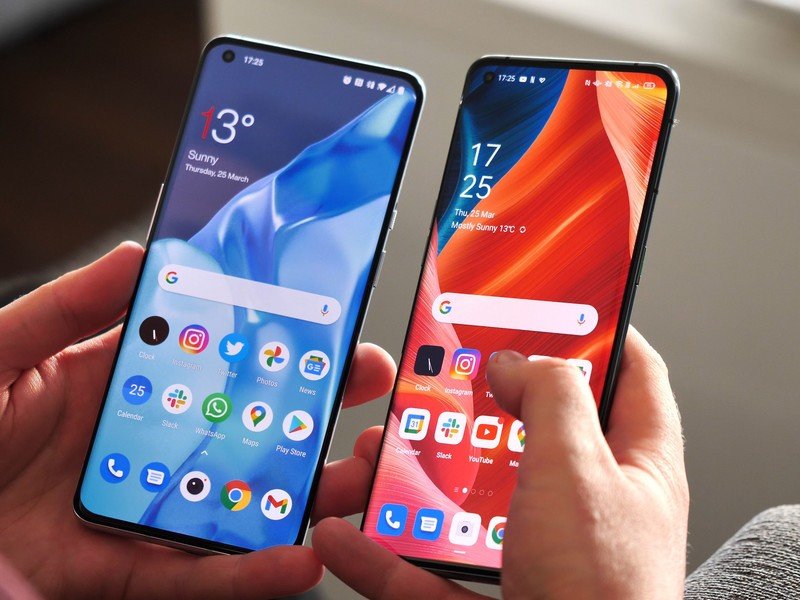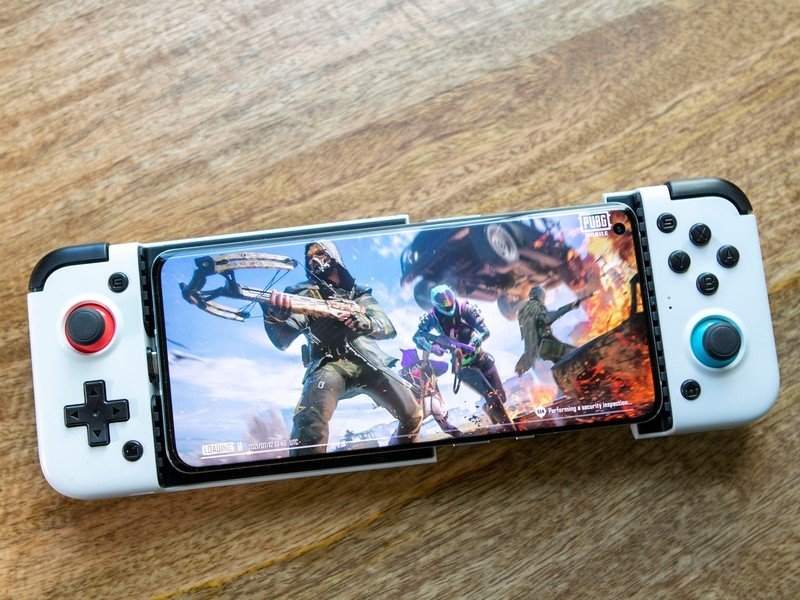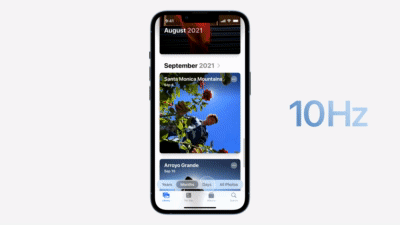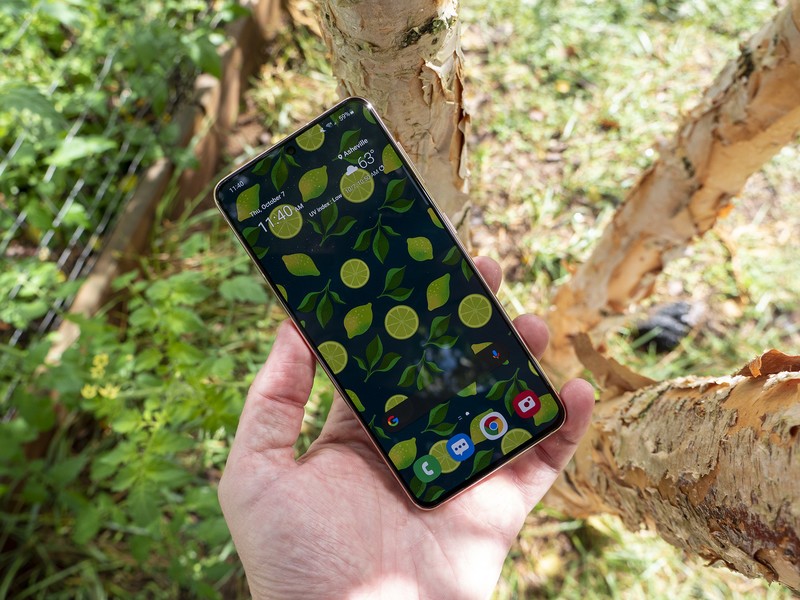iPhone 13 ProMotion isn't as innovative as Apple wants you to think

Like many technologies, Apple's debut of 120Hz refresh rates on the latest high-end iPhones got many iPhone users very excited. High refresh rates are one of the best things to ever happen to displays — particularly mobile ones — as they help accentuate just how fast our devices have become. Everything feels smoother and just better, but why did it take so long for Apple to bring this tech to its phones when it debuted 120Hz on iPads four years ago?
Further yet is the fact that only the iPhone Pro models have this feature — marketed as Apple ProMotion, just as Apple marketed high-resolution displays as Retina — leaving one of the best generational upgrades only to those willing to fork out extra for it.
Apple's LTPO tech in the iPhone 13 Pro and Pro Max comes with some advantages over the competition, but it also has some surprising drawbacks. It fails to match the 1Hz metric that the OnePlus 9 Pro can achieve, even though Apple pioneered mobile 1Hz OLED panels on the Apple Watch Series 4. What's more, software restrictions mean app developers technically need to update their apps to take full advantage of the new ProMotion feature. So which of the best smartphones does it best? Let's take a look.
High refresh rates: A brief history

As a quick refresher (get it?), a refresh rate is the term used to describe the number of times the display is redrawn per second, enabling your eyes to see a moving image. Think of one of those old flipbooks where you draw a slightly different sketch on each page to fake movement, and you'll get the idea.
As expected of this sort of performance-based metric, the PC world initially pushed high refresh rates as ways to help competitive gamers get a new edge in their gameplay. On the mobile side of things, though, the extra processing power needed for high refresh rates would, invariably, reduce the battery life of any device that attempted such a feat.
Apple pioneered 1Hz LTPO displays in the Apple Watch, but OnePlus has the only phones with a 1Hz-capable OLED display.
That's why Apple first put a 120Hz IPS LCD screen on the 2017 iPad Pro, as it specifically helped introduce a smooth Apple Pen experience and benefitted many other apps in the process. Because it's a tablet with a massive battery, many people wouldn't likely notice any battery life reductions that came with a higher refresh rate.
Apple's iPad OS was designed to adjust the refresh rate depending on what was on the screen. So, for example, when no movement was occurring — such as when a picture was viewed in the gallery app — the refresh rate on the iPad Pro would drop to 24Hz. Similarly, movies would play back at 48Hz — double the 24Hz refresh rate most movies are filmed at — while other content with movement would use the full 120Hz.
Get the latest news from Android Central, your trusted companion in the world of Android
Razer launched the first phone with a 120Hz refresh rate later in 2017 — dubbed the Razer Phone — but that device suffered from some pretty awful brightness levels that made it difficult to see outside.
Just a year later, in fall 2018, Apple introduced a new type of screen technology for the Apple Watch Series 4 called low-temperature polycrystalline oxide, or LTPO for short. LTPO, in a nutshell, is one of the many layers of a modern display that helps regulate the refresh rate of the display. LTPO can be used with different types of display technology, including IPS LCD and OLED.
Samsung phones beat Apple to the punch by an entire year, but Apple did 120Hz first on the iPad.
But the Apple Watch's use of LTPO wasn't for high refresh rates. On the contrary, it was developed so the Apple Watch could have an always-on display that wouldn't affect battery life much, and LTPO allowed Apple to drop the refresh rate to an amazing 1Hz. Since always-on displays don't typically feature movement — something that would look terrible at 1 screen refresh per second — this was an ideal use-case for the tech.
Two years later, the Note 20 Ultra debuted as the first smartphone to utilize LTPO tech for a very different reason. This time, Samsung was using its version of LTPO to enable variable 120Hz refresh rates on its phones. Similar to the iPad, the phone would adjust its refresh rate depending on what content was on the screen.
Samsung built in far more granular scenarios for refresh rate adjustments and reduced the minimum refresh rate to 10Hz for static images. OnePlus went another step further when the OnePlus 9 Pro was released in mid-2021, lowering the minimum refresh rate to 1Hz while maintaining that 120Hz upper threshold for the best experience.
Touch-based variable refresh rate isn't actually new

The iPhone 13 Pro and Pro Max are the first Apple phones with LTPO tech baked into their OLED displays. During the iPhone 13 unveiling, Apple took the time to highlight this touch-based method of calculation, which raises the refresh rate to 120Hz while touching the screen. Once you let go, the system calculates how and when it can drop the refresh rate dynamically based on what's happening on the screen.
OnePlus and Samsung have been using touch-based refresh rate adjustments for a while now.
Several articles followed this announcement with the usual claims of innovation on Apple's part, seemingly without consideration to what the rest of the non-iPhone market has been doing. Many of these articles focused on the idea that touch-based adjustments were the differentiating factor for Apple's own LTPO display tech.
Turns out, Samsung and OnePlus were doing the same kinds of calculations in flagship phones that have been out for a while now. OnePlus debuted extremely similar tech in the OnePlus 9 Pro and, in fact, used an extremely similar GIF in their blog post explanation of the tech back in early March 2021.


Finding the difference in the above GIFs between the OnePlus 9 Pro and the iPhone 13 Pro is as complex as telling the tech apart in real life. Samsung uses a similar technology that adjusts the refresh rate based on touch and on-screen content but, in our tests, isn't quite as reliable or responsive as Apple or OnePlus' implementations.
Part of that difference is the touch latency of the panels. While OnePlus and Samsung don't go out of their way to publish the actual touch latency of their panels, OnePlus did say its panel on the OnePlus 9 Pro reduces touch latency 25 to 30ms over the previous generation display.
Meanwhile, Apple publishes the exact touch latency for each refresh rate, which includes an incredible 8ms response time when the panel is running at 120Hz. In short, that's the time the display takes to respond to your finger, and Apple is doing it better than anyone else.
Our own Tshaka Armstrong got a chance to put these phones head-to-head and record them in slow motion, which should give you an idea of what they look like under close scrutiny. These videos were recorded at 120 FPS and played back at 30 FPS, giving you a look at how smooth animations are when slowed down to 1/4 of the regular speed.


While the tech remains similar, Apple's implementation of ProMotion just looks better than either Samsung OnePlus' methods when viewed at 1/4 speed. When using the phones at normal speed and in person, it's much more difficult to see these nuanced differences, but you can certainly feel them.
Apple's lower touch latency makes the iPhone 13 Pro feel palpably smoother than the competition.
Watching the two clips, you'll notice that the iPhone 13 Pro can better keep up with Armstrong's finger as he scrolls up and down the Android Central home page. The OnePlus 9 Pro is a bit behind, and Samsung's Galaxy S21 Plus is even further behind.
That's the difference a lower touch latency can bring, and it's probably the only real-world example of what Apple is doing better than anyone else when it comes to high refresh rates.
Apple is also offering more granular intermediate refresh rates between the highest and lowest values. That's 10 steps between 120Hz and 10Hz, or 12 possible refresh rates, in total. Samsung offers a total of six steps (120Hz to 10Hz), while OnePlus didn't provide us with all the possible steps between 1Hz and 120Hz. Their GIF certainly makes me think there are quite a few, though.
What Samsung and OnePlus are doing better

Given how similar LTPO tech is across these three manufacturers' devices, there is still one big thing Samsung and OnePlus are doing better than Apple. Much like when Apple changes the resolution or aspect ratio of its devices — typically when a new iPad or iPhone size gets released — developers are finding that they need to update their apps to mesh with Apple's latest OS-based changes.
From Android Central's iPhone 13 Pro Max review, Harish Jonnalagadda says, "While the 120Hz panel has been long overdue, Apple is currently limiting the mode to its own apps. Third-party apps and games are still at 60Hz, with Apple asking developers to update their apps to optimize for the 120Hz mode. Apple doesn't enforce any such guidelines for the iPad Pro, and it is likely that battery life was a consideration in its decision to do so here."
Developers have to individually update their iOS apps to support high refresh rates. Android does it automatically.
When it comes to high refresh rates like Apple's ProMotion feature, developers have to add a small piece of code to their apps to call for smoother animations when high refresh rates are available. This isn't needed for all animations but, when it's not implemented, it could make the app look slow or janky since it wouldn't be using the proper animations for the refresh rate.
The fact that developers have to update their apps — apps specifically designed for Apple's very closed operating system — is pretty silly in 2021. Apple maintains an entire guide on how developers should treat high refresh rates and the accompanying animations, all in the name of saving battery life.
That's great and all but, given the significant battery size increase in this year's iPhones, this seems an unnecessary step to make developers adhere to just to give their users the best experience.
Apple's inclusion of ProMotion only on the highest-end iPhones seems unnecessarily elitist.
Meanwhile, Android developers don't have to deal with this stuff. High refresh rates, like resolutions and aspect ratios, are handled by the system and scale apps accordingly. Developers can always update their apps to better work with these different metrics and concepts but aren't required for their users to get the best experience.
Apple did a great job implementing high refresh rate tech in a battery-friendly way but could have done a better job making it simpler for developers to take advantage of this new feature.
It's also quite silly that only the top-end iPhone 13 models have ProMotion, especially given that even mid-range phones like the Motorola edge (2021) have no issue doing it on the Android side. It feels like an arbitrary decision made in the name of elitism which, based on history, isn't beyond Apple by any means.

